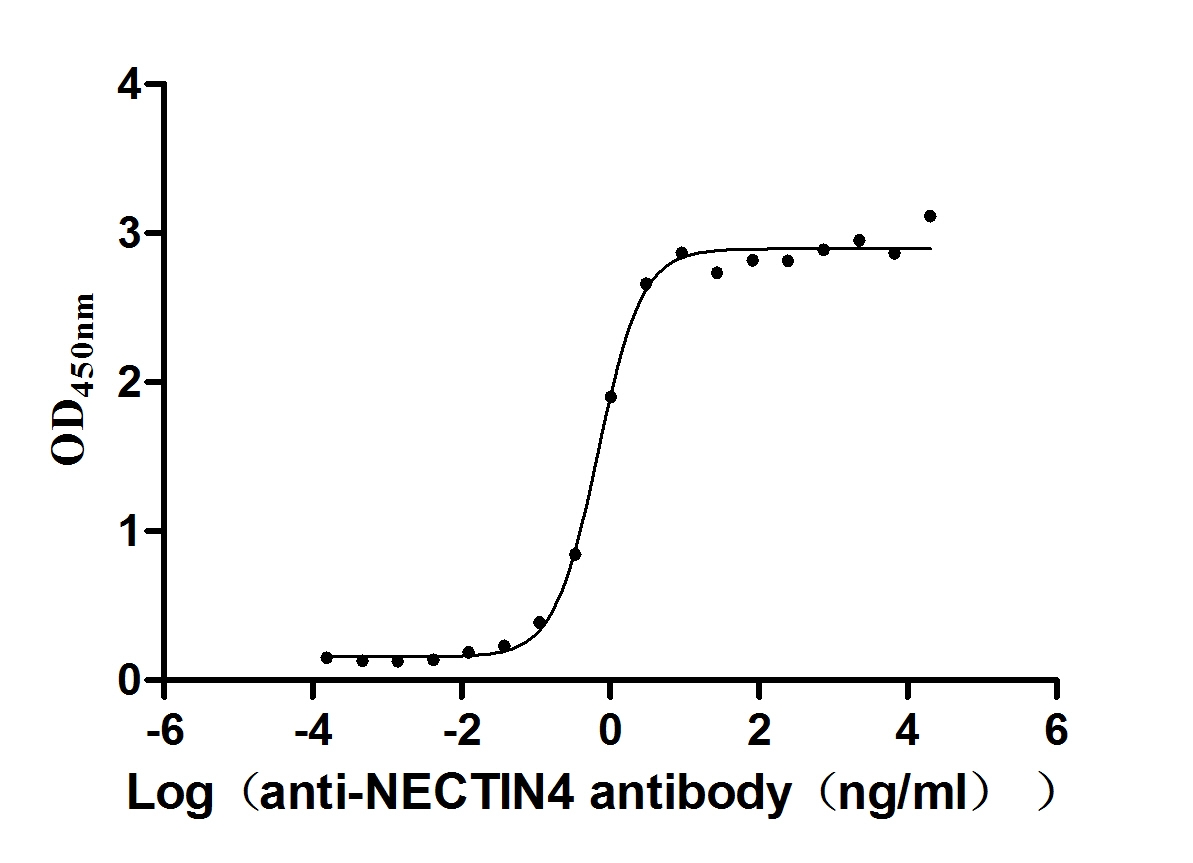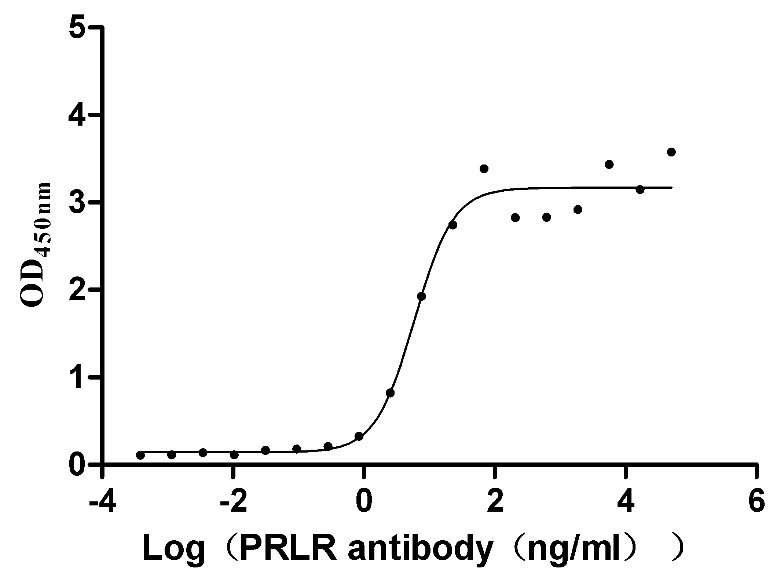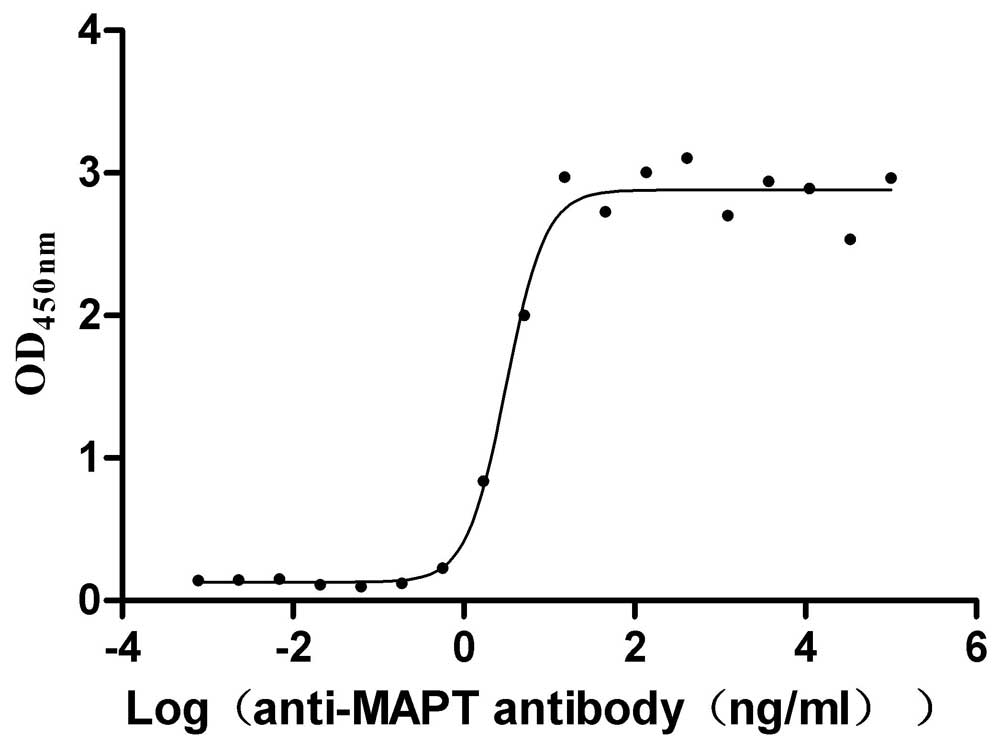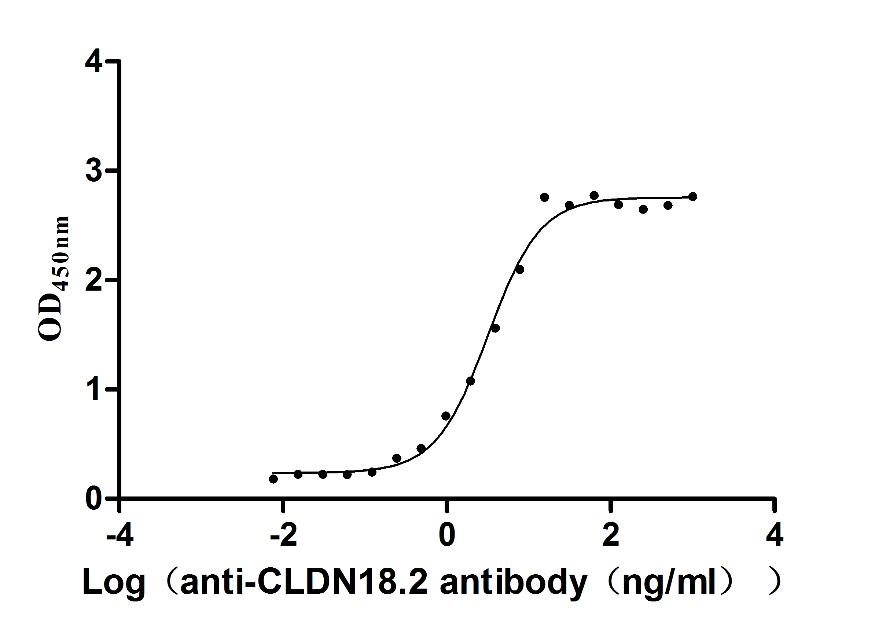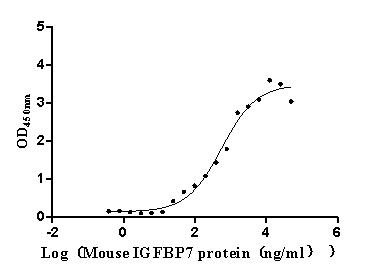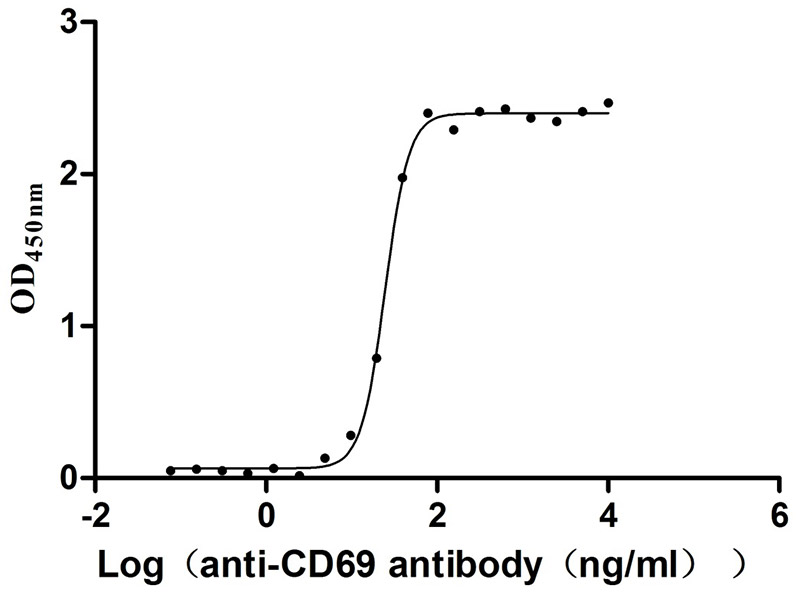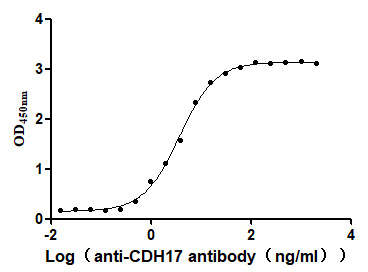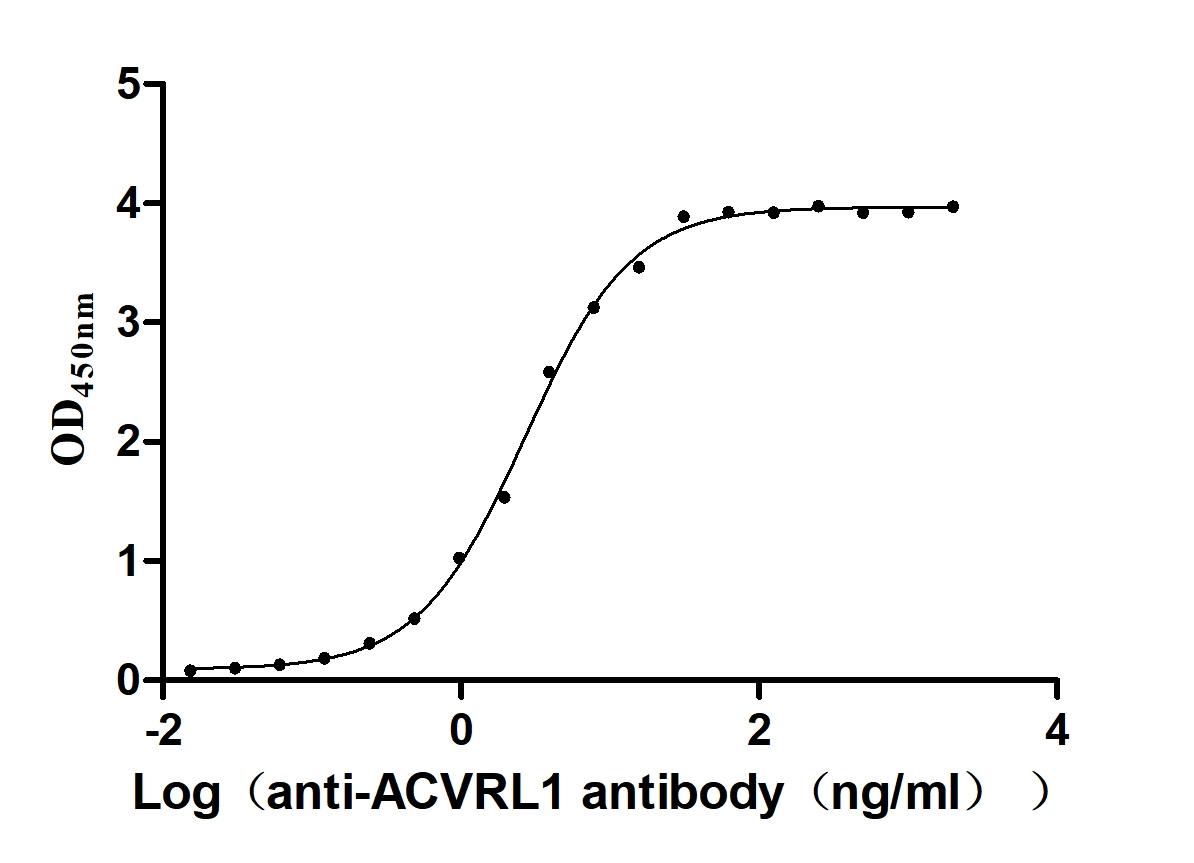Recombinant Arabidopsis thaliana Transcription activator GLK1 (GLK1)
-
中文名称:拟南芥GLK1重组蛋白
-
货号:CSB-YP882872DOA
-
规格:
-
来源:Yeast
-
其他:
-
中文名称:拟南芥GLK1重组蛋白
-
货号:CSB-EP882872DOA
-
规格:
-
来源:E.coli
-
其他:
-
中文名称:拟南芥GLK1重组蛋白
-
货号:CSB-EP882872DOA-B
-
规格:
-
来源:E.coli
-
共轭:Avi-tag Biotinylated
E. coli biotin ligase (BirA) is highly specific in covalently attaching biotin to the 15 amino acid AviTag peptide. This recombinant protein was biotinylated in vivo by AviTag-BirA technology, which method is BriA catalyzes amide linkage between the biotin and the specific lysine of the AviTag.
-
其他:
-
中文名称:拟南芥GLK1重组蛋白
-
货号:CSB-BP882872DOA
-
规格:
-
来源:Baculovirus
-
其他:
-
中文名称:拟南芥GLK1重组蛋白
-
货号:CSB-MP882872DOA
-
规格:
-
来源:Mammalian cell
-
其他:
产品详情
-
纯度:>85% (SDS-PAGE)
-
基因名:GLK1
-
Uniprot No.:
-
别名:GLK1; GPRI1; At2g20570; F23N11.11; Transcription activator GLK1; GBF'S PRO-RICH REGION-INTERACTING factor 1; Golden2-like protein 1; AtGLK1
-
种属:Arabidopsis thaliana (Mouse-ear cress)
-
蛋白长度:full length protein
-
表达区域:1-420
-
氨基酸序列MLALSPATRD GCDGASEFLD TSCGFTIINP EEEEEFPDFA DHGDLLDIID FDDIFGVAGD VLPDLEIDPE ILSGDFSNHM NASSTITTTS DKTDSQGETT KGSSGKGEEV VSKRDDVAAE TVTYDGDSDR KRKYSSSASS KNNRISNNEG KRKVKVDWTP ELHRRFVEAV EQLGVDKAVP SRILELMGVH CLTRHNVASH LQKYRSHRKH LLAREAEAAN WTRKRHIYGV DTGANLNGRT KNGWLAPAPT LGFPPPPPVA VAPPPVHHHH FRPLHVWGHP TVDQSIMPHV WPKHLPPPST AMPNPPFWVS DSPYWHPMHN GTTPYLPTVA TRFRAPPVAG IPHALPPHHT MYKPNLGFGG ARPPVDLHPS KESVDAAIGD VLTRPWLPLP LGLNPPAVDG VMTELHRHGV SEVPPTASCA
-
蛋白标签:Tag type will be determined during the manufacturing process.
The tag type will be determined during production process. If you have specified tag type, please tell us and we will develop the specified tag preferentially. -
产品提供形式:Lyophilized powder
Note: We will preferentially ship the format that we have in stock, however, if you have any special requirement for the format, please remark your requirement when placing the order, we will prepare according to your demand. -
复溶:We recommend that this vial be briefly centrifuged prior to opening to bring the contents to the bottom. Please reconstitute protein in deionized sterile water to a concentration of 0.1-1.0 mg/mL.We recommend to add 5-50% of glycerol (final concentration) and aliquot for long-term storage at -20℃/-80℃. Our default final concentration of glycerol is 50%. Customers could use it as reference.
-
储存条件:Store at -20°C/-80°C upon receipt, aliquoting is necessary for mutiple use. Avoid repeated freeze-thaw cycles.
-
保质期:The shelf life is related to many factors, storage state, buffer ingredients, storage temperature and the stability of the protein itself.
Generally, the shelf life of liquid form is 6 months at -20°C/-80°C. The shelf life of lyophilized form is 12 months at -20°C/-80°C. -
货期:Delivery time may differ from different purchasing way or location, please kindly consult your local distributors for specific delivery time.Note: All of our proteins are default shipped with normal blue ice packs, if you request to ship with dry ice, please communicate with us in advance and extra fees will be charged.
-
注意事项:Repeated freezing and thawing is not recommended. Store working aliquots at 4°C for up to one week.
-
Datasheet :Please contact us to get it.
靶点详情
-
功能:Transcriptional activator that functions with GLK2 to promote chloroplast development. Acts as an activator of nuclear photosynthetic genes involved in chlorophyll biosynthesis, light harvesting, and electron transport. Acts in a cell-autonomous manner to coordinate and maintain the photosynthetic apparatus within individual cells. May function in photosynthetic capacity optimization by integrating responses to variable environmental and endogenous cues. Prevents premature senescence.
-
基因功能参考文献:
- P69 binding to GLK proteins may interfere with the interaction between GLK proteins and upstream transcription factors, causing defective binding of GLK proteins to their targets. PMID: 27964999
- silencing of AtRAP by AtlsiRNA-1 upon bacterial infection triggers defense responses through regulation of LSU2 and GLK1. PMID: 28656601
- Plastid signals down-regulate the accumulation of GLK1 through the ubiquitin-proteasome pathway. PMID: 27821720
- Overexpressors of the Golden2-like transcription factors GLK1 and GLK2 were identified as genomes uncoupled mutants. PMID: 26876646
- plants that overexpress GLK1/2 exhibited an open-stomata phenotype and higher sensitivity to ozone PMID: 27035938
- data reveal that AtGLK1 is involved in JA-dependent susceptibility to the biotrophic pathogen Hpa Noco2 and in JA-independent resistance to the necrotrophic pathogen B. cinerea PMID: 24393452
- Overexpression of GLKs caused up-regulation of not only their direct targets but also non-target nuclear and plastid genes, leading to global induction of chloroplast biogenesis in the root. PMID: 23749810
- ORE1 interacts with the G2-like transcription factors GLK1 and GLK2, which are important for chloroplast development and maintenance. PMID: 23459204
- AtGLK1 may coordinate plastid protein import and nuclear gene expression. PMID: 19726569
- GLK1 'regulon' encodes disease defense related proteins and confers resistance to Fusarium graminearum in Arabidopsis PMID: 17533111
- GLK1 and GLK2 are functionally equivalent. They act in a cell-autonomous manner to regulate chloroplast development. When mis-expressed in the phloem, GLKs can be unloaded into adjoining photosynthetic tissue. PMID: 18643989
- GLK1 and GLK2 stimulate expression of chlorophyll biosynthesis and light-harvesting genes. PMID: 19376934
显示更多
收起更多
-
亚细胞定位:Nucleus.
-
组织特异性:Expressed in rosette and cauline leaves. Expressed at low levels in cotyledons and shoots.
-
数据库链接:
KEGG: ath:AT2G20570
STRING: 3702.AT2G20570.2
UniGene: At.24134
Most popular with customers
-
Recombinant Human Nectin-4 (NECTIN4), partial (Active)
Express system: Mammalian cell
Species: Homo sapiens (Human)
-
Recombinant Mouse Prolactin receptor (Prlr), partial (Active)
Express system: Mammalian cell
Species: Mus musculus (Mouse)
-
Recombinant Macaca mulatta Microtubule-associated protein tau (MAPT) (Active)
Express system: Mammalian cell
Species: Macaca mulatta (Rhesus macaque)
-
Recombinant Macaca fascicularis Claudin (CLDN18)-VLPs (Active)
Express system: Mammalian cell
Species: Macaca fascicularis (Crab-eating macaque) (Cynomolgus monkey)
-
Recombinant Mouse Complement component C1q receptor (Cd93), partial (Active)
Express system: Mammalian cell
Species: Mus musculus (Mouse)
-
Recombinant Human Early activation antigen CD69 (CD69), partial (Active)
Express system: Mammalian cell
Species: Homo sapiens (Human)
-
Recombinant Human Cadherin-17 (CDH17), partial (Active)
Express system: Mammalian cell
Species: Homo sapiens (Human)
-
Recombinant Human Serine/threonine-protein kinase receptor R3 (ACVRL1), partial (Active)
Express system: Baculovirus
Species: Homo sapiens (Human)


